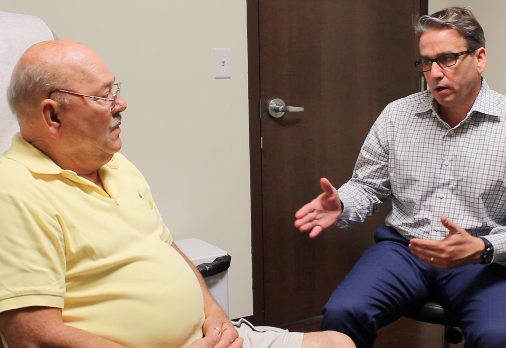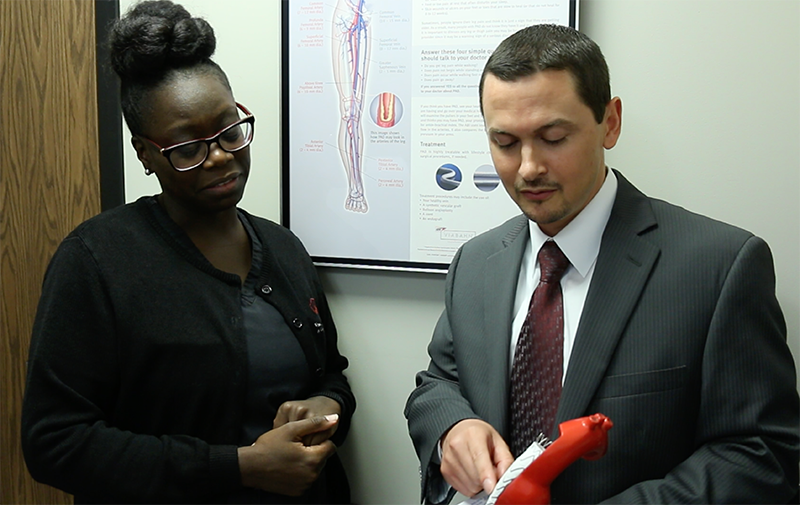 Every two seconds, someone in the world has a stroke, making it the second leading cause of death globally — more than 6 million people die from stroke every year. However, most of us are not aware of just how prevalent stroke is in our society: one in five women and one in six men are at risk of a stroke throughout their lifetime.
Every two seconds, someone in the world has a stroke, making it the second leading cause of death globally — more than 6 million people die from stroke every year. However, most of us are not aware of just how prevalent stroke is in our society: one in five women and one in six men are at risk of a stroke throughout their lifetime.
And there is another side to the story: those who survive. It is estimated that 50 million stroke survivors live with some form of permanent disability. What’s worse, many of these individuals also face social isolation, lack of psychological and emotional support, and depression.
But there is hope: 80 percent of strokes are preventable. According to the World Stroke Organization, raising awareness and improving education about strokes can go a long way toward reducing the risk of and preventing the disease.
What Is a Stroke?
Stroke is a disease that cuts off blood supply to the brain. A stroke happens when an artery carrying oxygen to the brain gets blocked by a clot or bursts. When denied nutrient-rich blood, brain cells get damaged and die. Because the brain acts as the nerve center for the entire body, cell damage from a stroke can impact any of the body’s core functions including:
- Mobility
- Speech
- Thought
- Feelings and sensation
Types of Stroke
The blood supply to the brain can be impeded in two primary ways giving rise to two kinds of stroke, ischemic and hemorrhagic.
An ischemic stroke comes about when an artery carrying blood to the brain becomes clogged or obstructed; this is primarily due to the buildup of fatty deposits along the blood vessel walls, a disease known as atherosclerosis. Ischemic strokes represent 87 percent of all stroke cases.
A hemorrhagic stroke occurs when a blood vessel becomes weak and ruptures, causing bleeding into the brain and damaging the surrounding brain tissue. The most common cause of hemorrhagic stroke is uncontrolled high blood pressure. Two types of weakened blood vessels cause hemorrhagic stroke: aneurysms and arteriovenous malformations (AVMs). An aneurysm occurs when an artery expands, or dilates, to more than one and a half times its normal size. If left untreated, the aneurysm can progressively get weaker until it bursts and bleeds into the brain.
$99 Could Save Your Life
Early vascular disease detection has great value – it can significantly reduce the risks of subsequent disability and death from vascular disease.
Stroke Warning Signs
There are clear warning signals that can tip you off to the presence of a stroke:
- Sudden numbing or weakening of the face, arm or leg, particularly on one side of the body
- Unexpected confusion, slurred speech, and having trouble comprehending
- Abrupt vision problems in one or both eyes
- Suddenly becoming dizzy, losing balance or having difficulty walking
- The onset of a sudden, severe headache with no apparent cause
If you notice one or more of these signs, urgent action is required. A stroke is a medical emergency, and you should call an ambulance or get to a hospital right away.
Proper Care Makes All the Difference
 Early recognition and seeking immediate treatment can often mean the difference between life and death and greatly enhance a person’s recovery afterward. Here’s why:
Early recognition and seeking immediate treatment can often mean the difference between life and death and greatly enhance a person’s recovery afterward. Here’s why:
- Roughly 10 percent of stroke patients recover exceptionally well when they receive care in a specialized stroke unit under the supervision of a specially-trained team
- Clot-breaking medications (tPA or thrombolysis) can improve patient outcomes by up to 30 percent. These drugs can be given up to four and a half hours after the onset of ischemic stroke symptoms
- Having a vascular surgeon remove a blood clot can enhance outcomes by 50 percent, increase survival rates, and lessen disability for patients with an ischaemic stroke caused by large artery blockage
- Rehabilitation is vital to achieve a full recovery and to regain full independence
How to Prevent a Stroke
The reality is that one in four stroke survivors will have another stroke at some point in their life. However, patients can take control of their health to boost their chances of averting a repetition of the disease.
Treatments to prevent further stroke include:
- Medications that lower blood pressure and cholesterol
- Antiplatelet therapies
- Anticoagulation medication
- Surgery for patients with severe carotid artery restriction
Knowing your personal risk factors can also contribute to lower your chances of having a stroke as well as lifestyle changes including:
- Eating a healthy, low-salt, and well-balanced diet
- Exercising regularly
- Not smoking
- Limiting alcohol consumption
